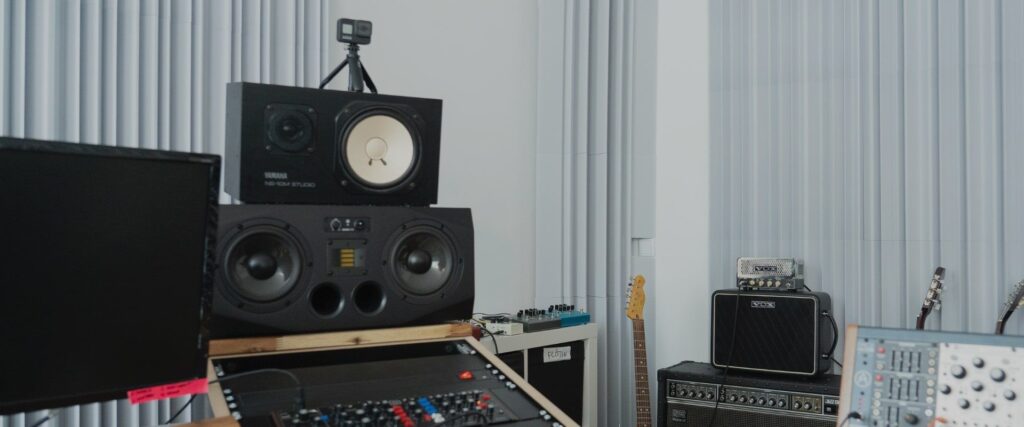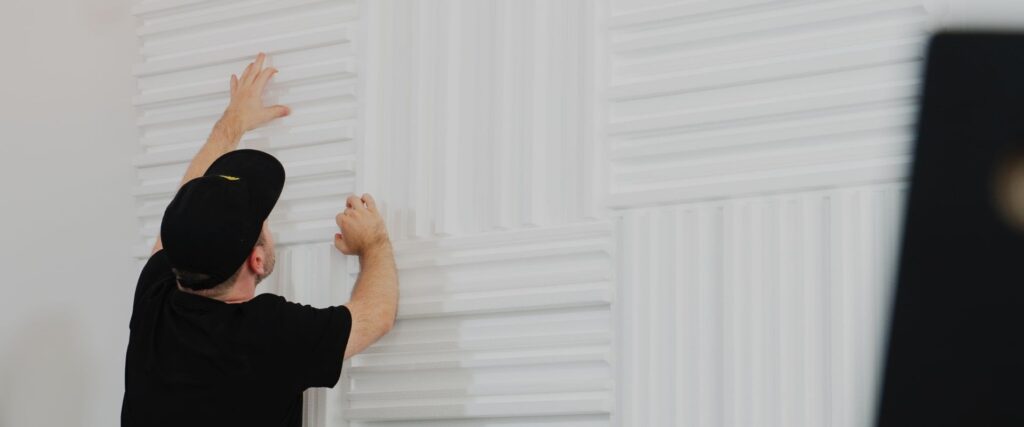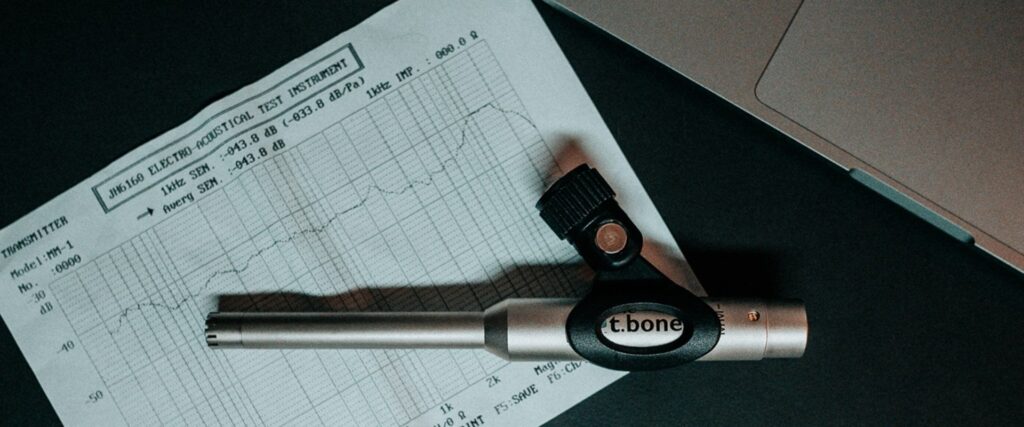
SOUND AND SOUND REFLECTIONS
Early reflections (ER) are an acoustic problem that’s especially relevant in the control room. Because they take a “detour” via the side or rear walls, these reflections reach the ears with a slight delay. When early reflections contain a lot of energy and the distance is large enough, they are clearly perceptible as echos. Most commonly, however, they overlap with the direct sound and color it. This is also known as a comb filter effect. When it happens, even the best studio monitor speaker cannot deliver its full potential.
The acoustic treatment of a room does not typically aim to completely eliminate all sound reflections. The goal ist to guide and control them in order to avoid the aforementioned problems.


In studio control rooms, the goal is to prevent strong reflections in the listening position. Thus, they must be deflected or reduced. You can do basic acoustic planning even without performing complex calculations. Imagine that flat surfaces are mirrors and sound is light. You’ll find that angled walls and ceilings, as well as various materials, help to prevent or deflect reflections. Ideally, the listening position becomes a reflection-free zone (RFZ).
Early reflections cause the most problems in the mid and high frequency ranges. In the low frequency range, the light analogy doesn’t apply, because the wave lengths are much greater. Due to their long wave lengths, some low frequencies fit entirely or partially between two parallel surfaces in a room. This means that they lose energy more slowly and linger around for longer. The technical term for such a frequency is mode.
Modes that are spread out evenly across the frequency spectrum usually don’t have a negative effect. But when they accumulate unevenly, the room resonates at certain frequencies. At the same time, it appears like “holes” appear elsewhere in the frequency spectrum. The goal is to prevent modes from overlapping in important places in the room, such as the listening position in a control room.
In room acoustics, it is possible to specifically target certain frequencies and prevent them from building up. In other cases, bass traps are a way to achieve a broad-band attenuation in order to prevent low-frequency build-ups.
More like this
You need to load content from reCAPTCHA to submit the form. Please note that doing so will share data with third-party providers.
More InformationYou are currently viewing a placeholder content from Turnstile. To access the actual content, click the button below. Please note that doing so will share data with third-party providers.
More InformationYou are currently viewing a placeholder content from Instagram. To access the actual content, click the button below. Please note that doing so will share data with third-party providers.
More InformationYou are currently viewing a placeholder content from Instagram. To access the actual content, click the button below. Please note that doing so will share data with third-party providers.
More Information




